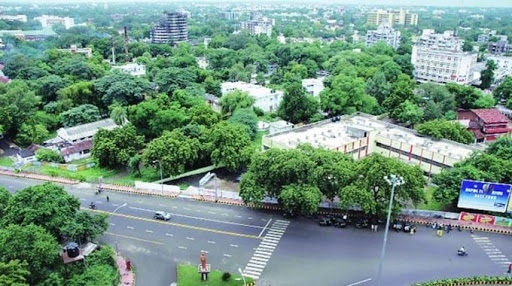‘City’s clean air plan doesn’t contain information on sources of pollution’
| Date :06-Jul-2020 |

Staff Reporter :
Nagpur city’s clean air plan does not contain information on the sources of air pollution, finds a new independent analysis by Council on Energy, Environment and Water (CEEW) and Urban Emissions. The analysis stressed that information on emission sources is crucial to tackle air pollution in Nagpur. At present, as per the said analysis, over 80 per cent of the actions mentioned in Nagpur’s plan involve ‘overseeing, planning, proposing, preparing, investigating, identifying, ensuring, banning, initiating, launching, planning, restricting and promoting’.
Thus, it records, only 20 per cent of the interventions in Nagpur’s clean air plan call for on-ground pollution control measures. Also, it adds, 38 per cent of the city’s action strategies are directed at transport sector and 20 per cent at industries. “While not entirely budgeted, Nagpur’s plan does estimate financial requirements for certain activities,” it states. The analysis also states that Nagpur’s clean air plan lacks a legal mandate for implementation. Referring to the lockdown period, the CEEW-Urban Emissions analysis states that the only real-time monitoring station in Nagpur reported a 30 per cent decline in PM2.5 concentrations.
According to Tanushree Ganguly, a researcher at CEEW and a co-author of the study, “However, to tackle air pollution in the city in the long-term, a single monitoring station for a city with over 2 million population is insufficient. Maharashtra Pollution Control Board and Nagpur Municipal Corporation must collectively prioritise the setting up of more monitoring stations and creating trackable indicators to oversee the progress of implementation of this plan,” Further, the CEEW-Urban Emissions analysis finds that Nagpur’s city plan lists 66 measures across 17 different agencies. Maharashtra Pollution Control Board (MPCB) is responsible for only 20 per cent of all actions in Nagpur, and urban local bodies (ULB) and State Transport Department share the burden of almost 60 per cent of the actions. Moreover, 34 per cent of actions fall under multiple agencies. “Independent estimates suggest that 21 per cent of the pollution in Nagpur could originate outside city limits.
However, the plan does not include any measures to ensure regional co-ordination,” adds the analysis. “With over 30 per cent of the activities shared across multiple agencies, fragmentation of accountability is a key impediment. Hence, it is crucial to delineate specific tasks for each action point among participating agencies,” said Kurinji Selvaraj, a researcher at CEEW and a co-author of the study. It may be mentioned here that India’s National Clean Air Programme (NCAP) recommends 102 cities including Nagpur to create city-specific clean air plans as a primary mitigation measure for reducing particulate concentration by 20 per cent to 30 per cent by the year 2024. CEEW-Urban Emissions analysis is based on a recent study. The analysis aimed at evaluating the robustness of 102 approved city action plans across India, including the plans of Nagpur, Chandrapur, and 15 other cities in Maharashtra.
‘Only 5 out of 17 city plans have info on emission sources’ As far as Maharashtra is concerned, the CEEW-Urban Emissions analysis finds that out of 17 non-attainment cities with approved action plans in the State, plans for only five namely Amravati, Chandrapur, Aurangabad, Kolhapur, and Mumbai contain information of emission sources. “However, this information does not translate into prioritising actions on the ground,” it adds. Besides, plans for only six cities namely: Amravati, Badlapur, Mumbai, Nashik, Pune and Solapur, list financial requirements for all actions. The analysis states, “The absence of sectoral emission reduction targets, city- specific priorities, and a standard protocol for air pollution reporting progress on actions across sectors, could derail implementation of the plans in the State.”